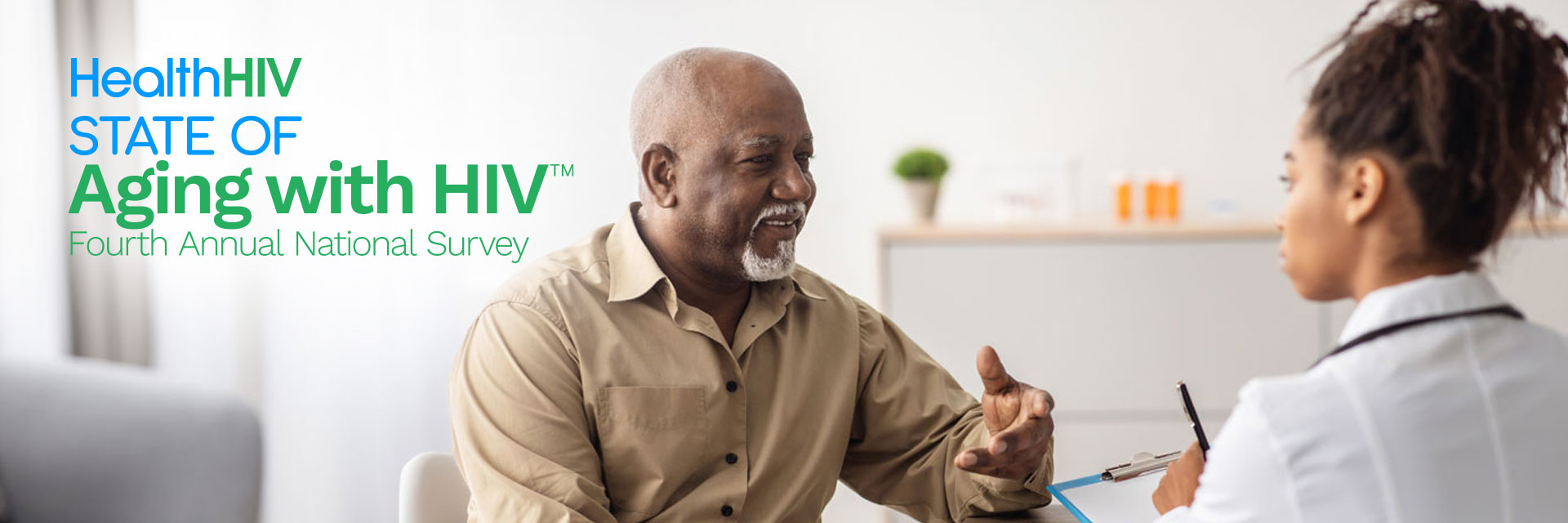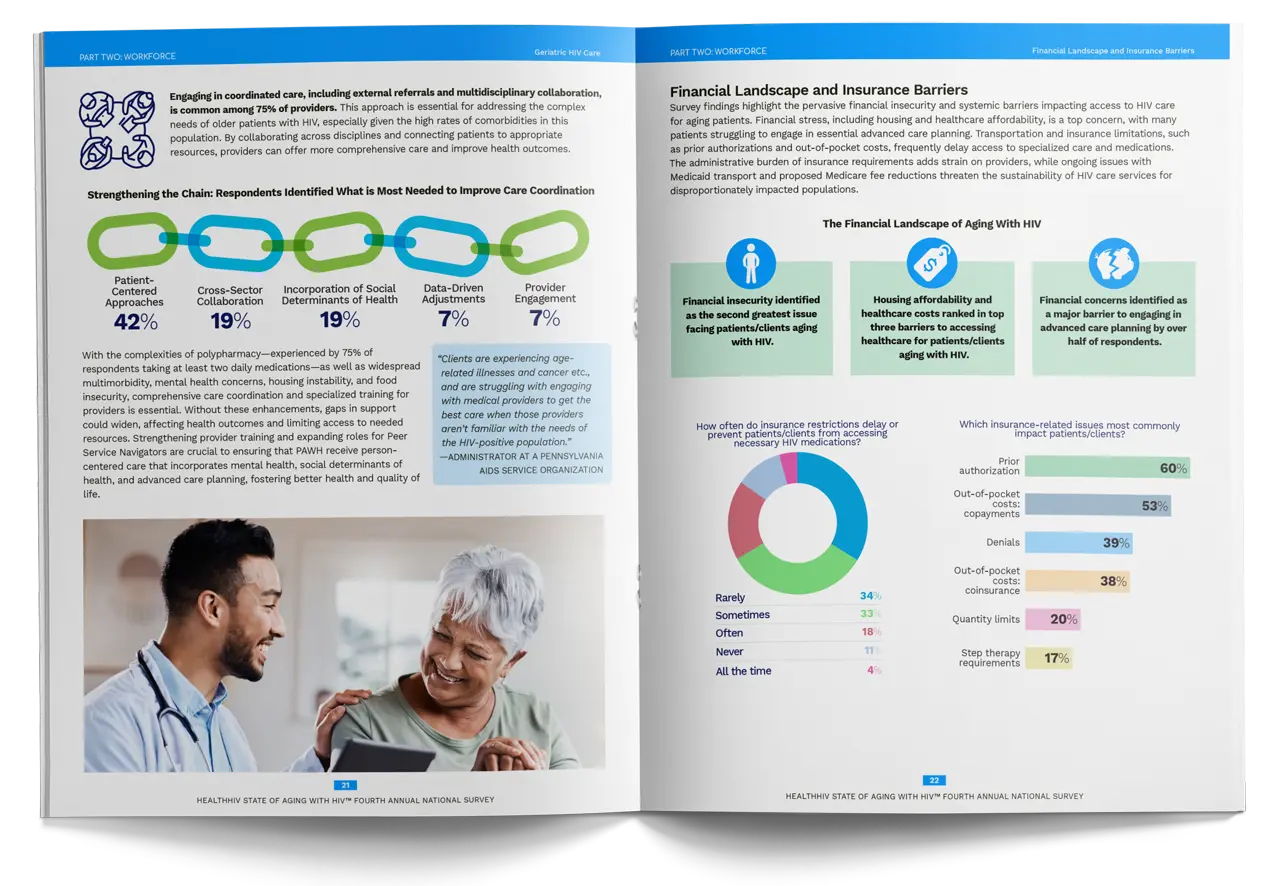
HealthHIV State of Aging with HIV™ Fourth Annual National Survey
HealthHIV’s Fourth Annual State of Aging with HIV™ National Survey examines crucial issues facing long-term survivors and adults aging with HIV. For the first time, this survey has two population focuses—one that reached the PAWH community and one that reached the workforce that provides health and human services to the population. The survey data was collected between August and September 2024 and included responses from 907 participants.
In coordination with HealthHIV’s Pozitively Aging program, the survey is dedicated to improving access to services and care coordination for People with HIV. Findings from this survey will be used in the creation of vital education and training materials for the HIV care workforce and will inform advocacy and research priorities for the coming year surrounding those aging with HIV.


